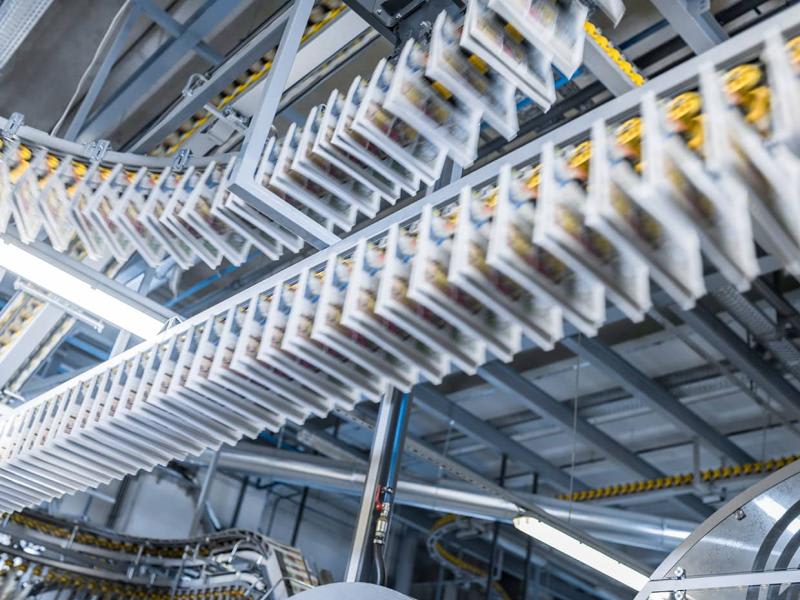Manufacturers’ Monthly spoke to Devika Shivadekar, economist from RSM Australia, who provided her insights into Australia's current economic outlook and the current implications of the recent 2024/25 federal budget announcement.
"We're still navigating an economic cycle aligned with the pandemic. It will take time for conditions to fully normalise to pre-pandemic levels," said Shivadekar.
"Having said that, the Australian economy has fared remarkably well. We've essentially achieved what economists typically term a 'soft landing,' which means beating a recession, although we are in one on a per capita basis, but that’s largely influenced by population growth rather than inherent weakness."
Meanwhile, the Reserve Bank of Australia (RBA) is expected to maintain interest rates amidst cautious consumer spending and ambitious budget measures to rejuvenate the manufacturing sector.
Australia's macroeconomic outlook
The Australian economy has navigated the pandemic with relative resilience, experiencing a soft landing and a significant reduction in inflation since December 2022.
Despite ongoing challenges, including cautious consumer spending and stagnant retail expenditure, the RBA is expected to maintain interest rates at 4.35 per cent for the next six months.
“The second-quarter CPI number is expected at the end of July, followed by the third-quarter CPI number in late October.
“Governor Michele Bullock has previously stated the RBA's preference for a long-term view on incoming data rather than reacting to each print. Therefore, even if there's some stickiness in the first-quarter CPI print, the RBA appears willing to exercise patience.”
The central bank faces the challenge of balancing consumer weakness with the need to bring down inflation, especially as the federal budget introduces stimulatory measures.
“Looking ahead, the central bank's biggest challenge seems to come from consumers” said Shivadekar.
“Balancing consumer weakness with price stability is crucial, as consumers are tightening their budgets due to cost-of-living pressures and interest rates. Cautious consumer sentiment has prevailed since the beginning of the year."
Until the effects of these measures take hold, Shivadekar said that the RBA is likely to remain on a cautious hold until November, with consumer confidence and spending being crucial indicators moving forward.
She continued to explain that the next six months are critical. Starting in July, various fiscal subsidies will take effect, including the energy relief measure where everyone receives $300.
This measure is neither targeted nor temporary, raising concerns about its impact.
“If individuals receive $300 at no cost, manage their bills, and maintain decent salaries, they might start spending more quickly, which we want to avoid,” said Shivadekar.
“Despite the uncertainties, we've held up well so far and will continue to do so, provided we remain disciplined with money.
“The RBA faces a tough job ahead, particularly as the final stretch of inflation coming down to target levels is rather bumpy. The RBA needs to maintain a sufficiently restrictive policy rate to keep a lid on price pressures.".”
Budget's impact on the manufacturing sector in Australia
The budget has shifted focus back to Australia's manufacturing sector, recognising its importance for national self-sufficiency, especially in the wake of pandemic-induced supply chain disruptions.
“The budget has brought significant attention back to the manufacturing sector, which has not been a primary focus for Australia in recent years,” said Shivadekar.
“While the country has shifted towards a more commodities-driven economy, the pandemic highlighted the importance of self-sufficiency.”
With a significant allocation of $22.7 billion over the next 8-10 years, the government aims to boost manufacturing and address challenges in the industry.
However, while the budget outlines ambitious initiatives like the Future Made in Australia Act and support for renewable energy and advanced manufacturing, Shivadekar explained that there is a lack of clarity regarding implementation timelines and pathways.
The success of these initiatives depends on quick and efficient implementation, broader support to address issues like government red tape and labour costs, particularly for SMEs in the sector.
“We need clarity because if the initiatives remain merely vocal, interest will wane over time, returning us to square one,” said Shivadekar.
“Swift implementation is necessary, along with broader support to cut through excessive red tape and address price pressures and labour costs, especially for SMEs in manufacturing.
“These smaller businesses suffer more in high-cost environments due to their reliance on external funding compared to larger corporations that can reinvest profits for growth and technological advancement.”
Therefore, there's rising pressure for expedited policy implementation to support SMEs and middle-market businesses.
Shivadekar expressed confidence in the government's focus on the manufacturing sector, emphasising the need for substantive action beyond mere rhetoric.
She continued to acknowledge short-term challenges but asserted that long-term benefits will outweigh them.
“It's inevitable. We shouldn't underestimate the budget's impact by dismissing it as mere smoke and mirrors,” said Shivadekar.
“Refocusing on the manufacturing sector will spark crucial dialogue. While short-to-medium-term challenges persist, they'll subside as we stay the course.
“It's a case of short-term pain for long-term gain. However, meaningful progress requires engaging with industry stakeholders to pinpoint specific issues rather than adopting a generalised approach.”
"One such glaring issue Australia currently faces is tepid productivity. Particularly in the manufacturing sector, this leads to higher production costs, reduced competitiveness, and lower profit margins, making it difficult for manufacturers to compete and invest in growth. This results in stagnant wages, slower innovation, and broader economic challenges."
Global economic impacts
The global manufacturing sector faces a mix of challenges and opportunities, including geopolitical tensions, trade disputes, and supply chain disruptions exacerbated by the pandemic.
“Over the past four years, the manufacturing sector, both globally and nationally, has faced a mix of challenges and opportunities,’ said Shivadekar.
“On one hand, we've seen heightened uncertainty due to geopolitical tensions, including the current situation in the Middle East, trade disputes, and on the other, lingering effects of the pandemic.
“Supply chain disruptions, raw material shortages, and fluctuating demand have impacted the manufacturing sector worldwide, much like in Australia.”
However, there are opportunities in areas like advanced manufacturing, clean energy, and technology, with many countries investing heavily in initiatives to enhance capabilities and strengthen supply chain resilience.
“Many of our developed market peers are heavily investing in initiatives to enhance manufacturing capabilities,” said Shivadekar.
“There's a strong push to promote innovation, particularly in AI and machine learning, and to strengthen supply chain resilience.
“This also emphasises the importance of strong bilateral relationships among trade partners to ensure supply chain integrity.”
There's a growing focus on sustainability, environmental tech, and innovation, with Australia somewhat lagging, but is poised to catch up through before-mentioned budget initiatives like the Future Made in Australia Act.
“The increasing focus on sustainability and environmental tech innovation has been consistent globally and in Australia,” explained Shivadekar.
“As long as we accelerate our efforts and deliver on budget initiatives, we can catch up quickly.
“There's immense scope for us to excel, and I believe we will succeed if we fulfill these promises, even if we're late to the party, compared to our peers.”
Overall, the outlook for manufacturing is somewhat mixed but the sector remains important to position Australia well in the global landscape and to make it self-sufficient.
RSM Australia provides manufacturers with a comprehensive suite of services, including audit and assurance, tax optimisation, business strategy, operational efficiency consulting, technology and, but not limited to, digital transformation advice.
These services are designed to enhance business performance, ensure regulatory compliance, optimise tax positions, and support strategic growth and operational improvements in the manufacturing sector.
As the Australian economy navigates post-pandemic challenges and opportunities, RSM Australia's expertise and insights, as highlighted by Devika Shivadekar, provide critical support for manufacturers aiming to adapt, innovate, and thrive amidst evolving economic conditions and budgetary measures.
FOR MORE INFORMATION
If you represent a manufacturer who would benefit from these services, get in contact with RSM Australia today.





